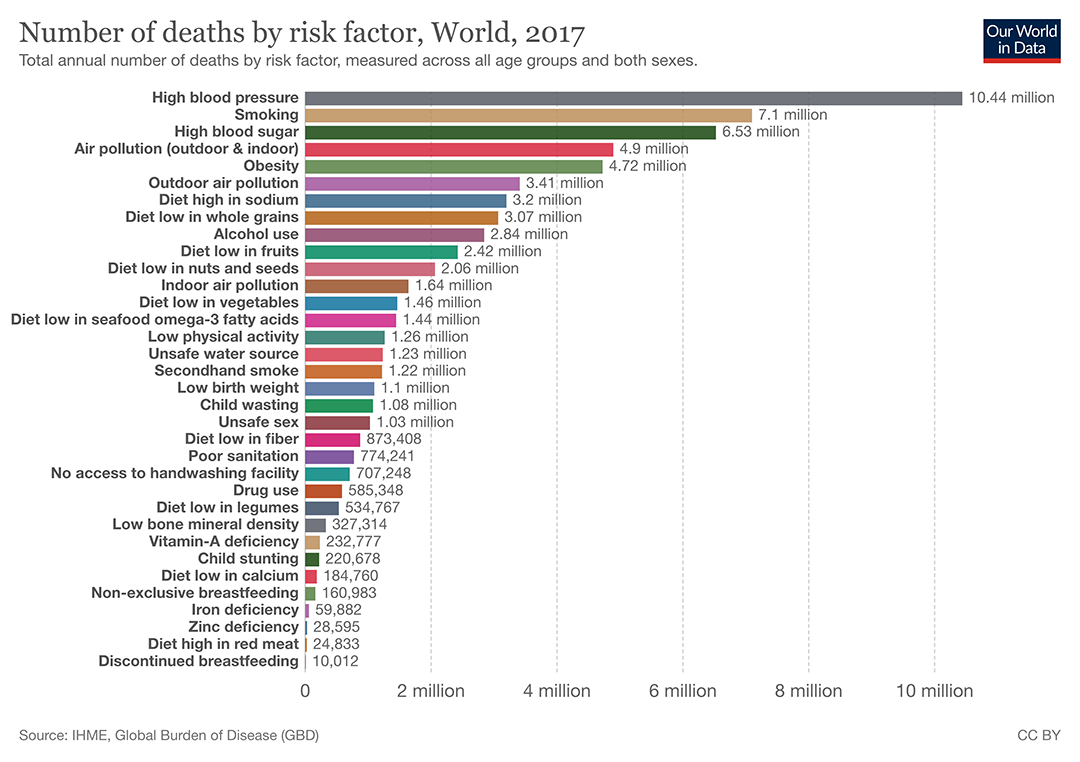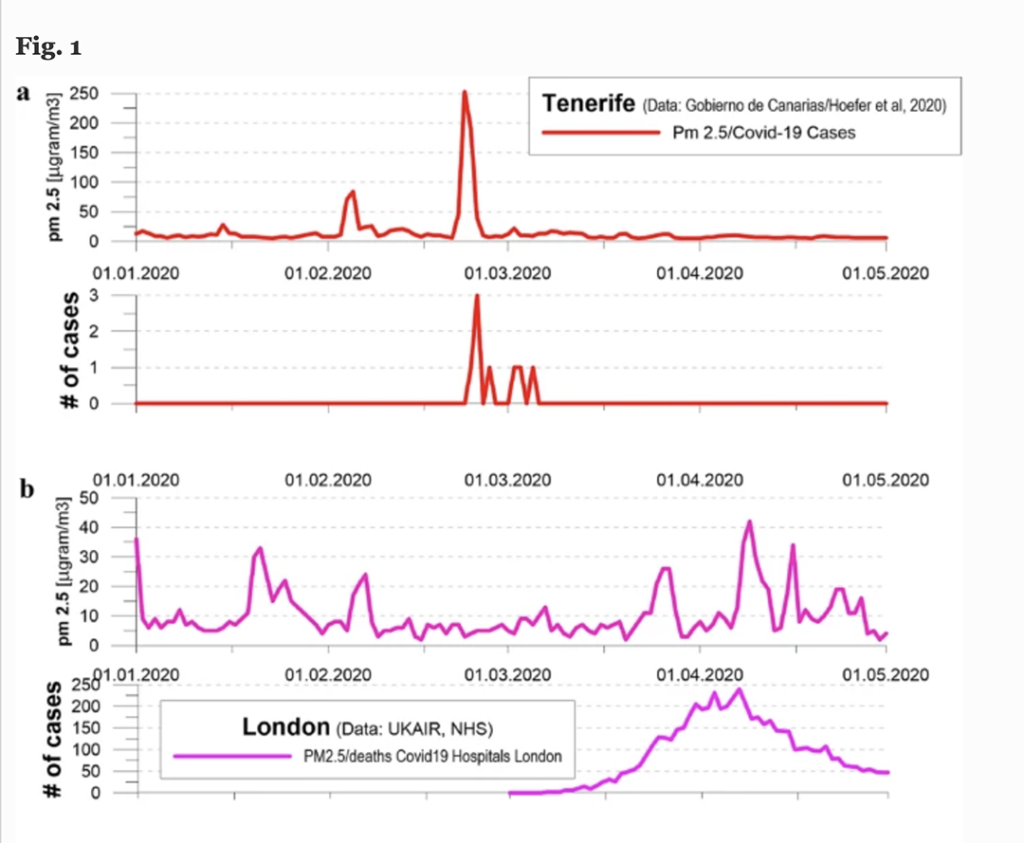21/11/2024


3 January 2022
Through two recent scientific studies, pollens and fine particles PM2.5 have entered the debate on the possible factors of acceleration of the SARS-CoV-2 contamination and propagation of the Covid-19 disease. This is an opportunity to recall, beyond the pandemic, that air pollution, both outdoor and indoor, is still one of the major causes of mortality in the world.
As a result of widespread global lockdowns and a general slowdown in economic activity and population movements, 84% of countries experienced a reduction in the level of fine particle PM2.5 air pollution in 2020. This is the result of a study published on 18 February by IQAir in partnership with the Greenpace association.
But of the 106 countries targeted, based on data from land-based monitoring stations, only 24 met WHO air quality standards. In a recent article published in the press under the title "Relying on the market to fight air pollution", economists Stefan Ambec and Claude Crampes remind us that "fine particles, nitrogen oxide, sulphur dioxide, volatile organic compounds (...) poison the air we breathe".
In France "it is 48,000 premature deaths per year, 9% of annual mortality, up to 2 years less life expectancy. These figures are comparable to those for Covid in 2020 (54,000 deaths according to INSEE). On the planet, that's 4.2 million deaths per year."
The most recent statistics, available on the reference site Our World In Data, even indicate 4.9 million deaths (2017) for cumulative indoor and outdoor air pollution, ranking 4th among causes of mortality. This figure could be underestimated: "Harvard researchers arrive at a total of 8.7 million premature deaths based on 2018. That is one in five deaths worldwide. (...) China still pays the heaviest price with 2.4 million victims. (source Le Monde 09/02/2021).
 Source Our Wolrd in Data
Source Our Wolrd in Data
In mid-April 2021, to complete this overview of the situation, Santé Publique France updated its estimates for the period 2016 to 2019, coming closer to the above figures: this institution estimates that "mortality linked to ambient air pollution remains a significant risk in France, with 40,000 deaths per year caused by fine particles PM2.5."
In this context, two studies have been published in the last few weeks, linking Covid-19 and changes in air quality. The first one is related to the impact of pollens. The second one is about the impact of fine particles PM2.5.
Under the title "Higher airborne pollen concentrations correlated with increased SARS-CoV-2 infection rates, as evidenced from 31 countries across the globe", a team of biologists from the Technical University of Munich started from the following idea: "Exposure to airborne pollen increases susceptibility to respiratory viral infections, regardless of allergic status.
We hypothesised that this might also be true for SARS-CoV-2 infections. To investigate this, we tested the relationships between SARS-CoV-2 infection rates and pollen concentrations, as well as humidity, temperature, population density and containment effects. Our dataset comes from 130 sites in 31 countries and five continents."
 Source PNAS
Source PNAS
The researchers conclude: "Our results show that simultaneous exposure to SARS-CoV-2 (via other infected human vectors) and airborne pollen can, under specific meteorological conditions, promote viral infection." In figures: an increase of 100 pollen particles per m³ would be equivalent to a 4% higher infection rate.
As correlation is not causation, they specify that these expectations must be taken with caution in order not to alarm the general public. While reminding that, for the most at-risk populations in terms of respiratory tract, wearing a mask - a barrier gesture that has become elementary in the Covid-19 situation - remains a wise precaution if a pollen episode occurs:
"Allergic patients have the same risk of Covid-19 as non-allergic patients," said Professor Laurent Guilleminault, a pneumo-allergist (Toulouse University Hospital), interviewed by La Dépêche. "The German study is interesting because it raises the question of the direct role of pollens. Indeed, it is a question of enzymes that can degrade the layer covering the bronchi or the nose... which would allow the virus to enter more easily. For the moment, there is no demonstration. Just the observation that at the time of pollen peaks, there are more cases of Covid".
This brings us back to the important distinction between correlation and causation: if two variables evolve simultaneously, this does not necessarily mean that one is the cause of the other.
The second study, reported in early March 2021 by many media, concerns the possible relationship between PM2.5 fine particles and Covid-19 contamination. "It is possible that air pollution by fine particles is responsible for aggravating the epidemic in terms of both the number of new infections and hospitalisations of Covid-19 cases" emphasised Antoine Flahaut in the columns of Le Monde (06/03/2021), professor of public health and director of the Institute of Global Health (University of Geneva), while several French regions (Corsica, Hauts-de-France, Grand-Est, Nouvelle-Aquitaine, Ile de France) had just been affected by successive episodes of rising sand from the Sahara.
The scientist is the co-author of a research paper published in November 2020 on this topic: "Peaks of Fine Particulate Matter May Modulate the Spreading and Virulence of COVID-19."
The abstract specifies the framework of the investigation: "We compare the possible links between peaks of fine particles (PM2.5) and the sudden and explosive increase in hospitalisations and mortality rates in the Swiss canton of Ticino, in the Greater Paris and London regions (ed. note: in March 2020).
 Source: Abstract of the study: « Peaks of Fine Particulate Matter May Modulate the Spreading and Virulence of COVID-19 »
Source: Abstract of the study: « Peaks of Fine Particulate Matter May Modulate the Spreading and Virulence of COVID-19 »
"We argue that these fine particle peaks occur mainly during the thermal inversion of the atmospheric boundary layer. We also discuss the influence of Saharan dust intrusions on the COVID-19 epidemic observed in early 2020 in the Canary Islands. We consider it both reasonable and plausible that elevated PM2.5 concentrations - favoured by air temperature inversions or Saharan dust intrusions - not only modulate but further enhance severe COVID-19 epidemics.
We conclude that the overloading of health services and hospitals as well as the high excess mortality observed in various parts of Europe in spring 2020 may be related to PM2.5 peaks and likely specific meteorological situations that favoured the spread and enhanced the virulence of the virus. In the future, we recommended to monitor not only the prevalence of the virus, but also to take into account the occurrence of meteorological situations that may lead to sudden and highly explosive outbreaks of COVID-19."
These words echo the work of radiologist Thomas Bourdrel and his co-authors, published in February 2021 (European Respiratory journal).
"The specific links between air pollution and SARS-CoV2 infection remain unclear," they summarise. "Here we provide evidence from in vitro, animal and human studies from the existing literature. Epidemiological investigations have linked various air pollutants to COVID-19 morbidity and mortality at the population level, but these studies have several limitations.
Air pollution may be a factor in the increased severity and lethality of COVID-19 due to its impact on chronic diseases, such as cardiopulmonary disease and diabetes. Experimental studies have shown that exposure to air pollution leads to a decrease in the immune response, thus facilitating viral penetration and replication.
Viruses can persist in the air through complex interactions with particles and gases depending on:
1) Chemical composition
2) Electrical charges from particles
3) Weather conditions such as relative humidity, ultraviolet (UV) radiation and temperature.
In addition, by reducing UV radiation, air pollutants can promote viral persistence in the air and reduce vitamin D synthesis."
Concretely, what consequences or even precautions... while the beautiful spring weather, often anticyclonic and accompanied by a weak wind, is a factor favourable to the degradation of the quality of the air: the emissions of fine particles from the road traffic, or even those of the domestic heating and unfortunately well of other sources, born from the hand of the human being... dissipating less quickly.
"Atmospheric pollution facilitates viral infections, and therefore the spread of viruses", explains Laurent Plantier, a pneumologist at the University Hospital of Tours, interviewed by Ouest-France. "The tissues are covered by what is called an epithelium, a layer of cells. This is covered with mucus which acts as a barrier to pathogens (diseases)... When the epithelium is damaged for X or Y reason, the first lesion facilitates the arrival of the others. (...) Allergens therefore pass through the protective barrier and trigger symptoms. To go so far as to say that fine particles PM2.5 and Covid-19 are linked, the question remains open for the practitioner...
One thing is certain, however, in the light of these troubled times... the issues relating to good air quality for all, and by extension those in favour of sustainable development for a preserved climate, are more significant than ever and brought to everyone's attention.
Whether by chance or coincidence, the French ATMO air quality index, created in 1994, has changed as of 1 January 2021 to include a new pollutant in its calculation... precisely the fine particles PM2.5. They join sulphur dioxide (SO2), nitrogen dioxide (N02), ozone (O3) and fine particles PM10.
The daily ranking consists of six levels, from good to extremely bad. It is determined for 24 hours, starting at 0:00 UT, for each municipality and at most for the inter-municipality. The final index is based on the worst sub-index for each of the five components.
 Source ATMO-FRANCE
Source ATMO-FRANCE
The latest version of the decree (14/12/2020) laying down the calculation methods defines the index as "a simplified representation of air quality in a background situation, i.e. far from specific sources of pollution such as road traffic for example". Finally, ATMO 2021 is no longer limited to the measuring station. "It provides information on an entire territory thanks to modelling and a spatial aggregation method," introducing the notion of representativeness of the geographical area."
The French can find the air quality index near their home and the forecasts by visiting the dedicated website. The data is also available in open data, region by region.